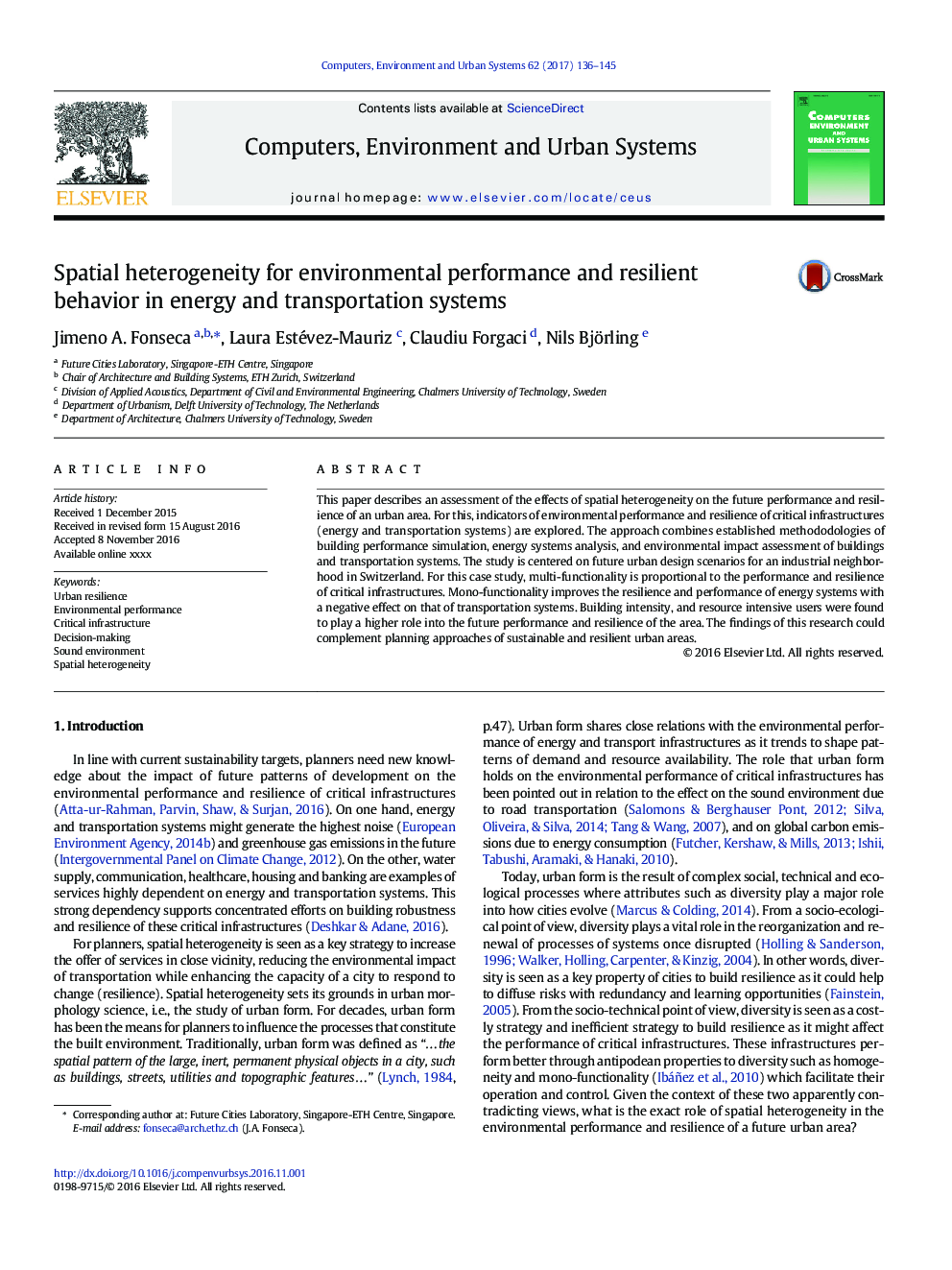| Article ID | Journal | Published Year | Pages | File Type |
|---|---|---|---|---|
| 4965222 | Computers, Environment and Urban Systems | 2017 | 10 Pages |
Abstract
This paper describes an assessment of the effects of spatial heterogeneity on the future performance and resilience of an urban area. For this, indicators of environmental performance and resilience of critical infrastructures (energy and transportation systems) are explored. The approach combines established methododologies of building performance simulation, energy systems analysis, and environmental impact assessment of buildings and transportation systems. The study is centered on future urban design scenarios for an industrial neighborhood in Switzerland. For this case study, multi-functionality is proportional to the performance and resilience of critical infrastructures. Mono-functionality improves the resilience and performance of energy systems with a negative effect on that of transportation systems. Building intensity, and resource intensive users were found to play a higher role into the future performance and resilience of the area. The findings of this research could complement planning approaches of sustainable and resilient urban areas.
Keywords
Related Topics
Physical Sciences and Engineering
Computer Science
Computer Science Applications
Authors
Jimeno A. Fonseca, Laura Estévez-Mauriz, Claudiu Forgaci, Nils Björling,
